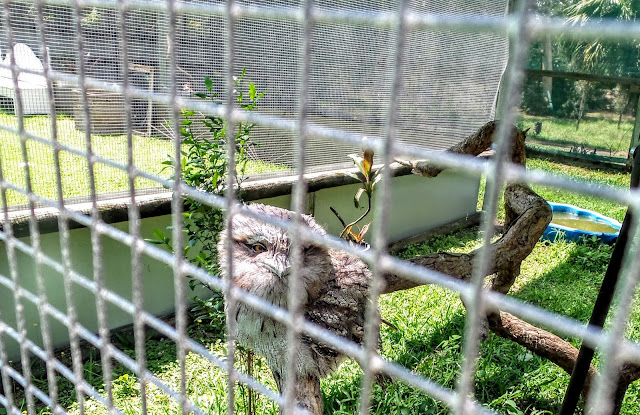On Friday, I made a Chocolate cake with Coffee Buttercream and I really enjoyed making this cake. I haven't cooked a double layer cake with a buttercream icing for quite a while, and it's how cakes always used to be made, generally with icing. This was simply a matter of adding the wet ingredients to the dry ingredients, with no electric mixer involved, just a wooden spoon and a bowl. A cinch to make. We had our tennis friends over for Dinner, after tennis, and as it was Lou's birthday, I wanted to make her a proper cake with icing, that could be nicely lit up by candles. The cake I chose is from Nigella Lawson's latest recipe book, "At My Table", and thanks Nigella because it is delicious and a delight to eat.
It's so nice to celebrate with cake, don't you think. As we get older, the saying of "a second on the lips, a lifetime on the hips" becomes particularly relevant, unfortunately, so Mr. HRK and I try to limit ourselves to desserts and cakes for mainly celebratory events now. We are getting better at it. Twenty years ago that wasn't an issue for me. However it is amazing how often celebrations come around and of course as a starter I have cake every Tuesday at Mahjong, which is a longstanding tradition, and so life goes on. It's all about enjoying a celebration now and then, and balancing our diet and lifestyle around the celebrations.
Anyway let's cook:
Ingredients for the cake:
225g Plain Flour
275g Caster Sugar
75g sieved good quality Cocoa
2 teaspoons Instant Espresso Coffee Powder
2 teaspoons Baking Powder
1 teaspoon Bicarbonate of Soda
175ml Full Cream Milk, at room temperature
175 ml Vegetable Oil, plus more for greasing the baking tins if you wish (I used butter for greasing mine)
2 large Eggs, at room temperature
250ml of Water, from a freshly boiled kettle
Ingredients for the Icing
350g icing sugar
175g soft Unsalted Butter
Instant Espresso Coffee Powder, 2 1/2 teaspoons, dissolved in 1 x 15ml tablespoons just-boiled water
(All of my tablespoon measurements are 20ml and that is what I probably used in this recipe with no problems)
This icing is a cinch to make in a food processor. Because it is warmer and more humid where I live than where this recipe was probable tested, I thought I might have problems with the icing melting all over the cake but it held it's consistency beautifully, although it is slightly cooler here at the moment.
- Preheat the oven to 180 deg. C./160 deg. C. Fan forced
- Grease the sides and line the bases of two 20 cm cake tins. It is important not to use cake tins with loose bottoms as this mixture is very runny (a very liquid batter).
- Combine the flour, sugar, cocoa, 2 teaspoons of powdered instant espresso powder, baking powder and bicarb soda in a large bowl. Mix with a fork until thoroughly combined.
- Whisk the eggs, milk and oil together in a smaller bowl. Pour the wet ingredients into the dry and with a whisk or wooden spoon beat to mix until you have a smooth, but thick mixture like a fudge.
- Gently beat in the just boiled water, scraping the sides and bottom of the bowl as you do.
- A smooth dark, glossy and fairly runny batter will develop and when everything is well mixed, pour equally into the two tins. (If you have a large batter pouring jug that you can mix the ingredients in use that for easier pouring, however I just used a large bowl.)
- Place the cake tins into your oven for 25-35 minutes, but Nigella suggests that you start checking at 20. Mine took 35 minutes to cook, by which time, the cakes were coming away from the sides of the tin, and a few cracks were forming on the surface. Don't worry about that, it will all be covered up by delicious butter cream icing. When the cake tester came out clean I knew they were cooked.

8. Cool the cooked cakes in their tins on a wire rack for 15 minutes, before unmoulding gently and peeling off the lining on the base. The cakes need to be handled gently so as not to break.
Let's make the icing now:
Generally when I make icing for a cake I just do it as I have always done and add the ingredients until it looks, feels and tastes right. However luscious Buttercream is a different story so I followed this recipe.
Pulse the icing sugar in your food processor a few times to remove any lumps but make sure the feeding funnel on the lid is covered so that icing dust doesn't fly everywhere:)
Add the softened butter and blitz to mix, scraping down the bowl once or twice.
With the motor running again, pour the coffee down the funnel of the processor and quickly blitz. Remove the blade carefully and scrape down the blade with a spatula.
Place one of the cakes on a serving plate or stand, flat-side up. It is probably better to place the highest cake as the base. Spread the lower layer generously with half the coffee butter cream, then make a sandwich with the second layer, with the top of the cake facing upwards.
Pile the rest of the butter cream on top, and use a wide icing knife or spatula to spread the icing, over the cake. Nigella uses the word swirlingly to describe this technique which I love.
Decorate as you wish. I used smashed pistachio nuts, or you could use chocolate covered coffee beans as she did. It is your choice.
If you eat some cake this week, I hope you really enjoy it. Have a great week. We are enjoying some rain which is wonderful, and means it is also cool.
Best wishes
Pauline





































